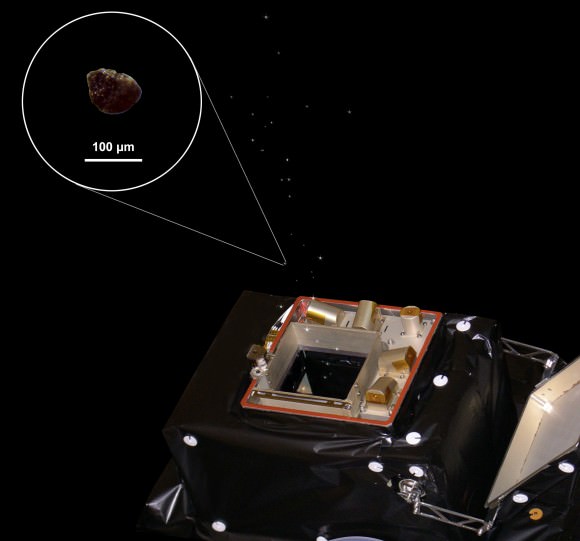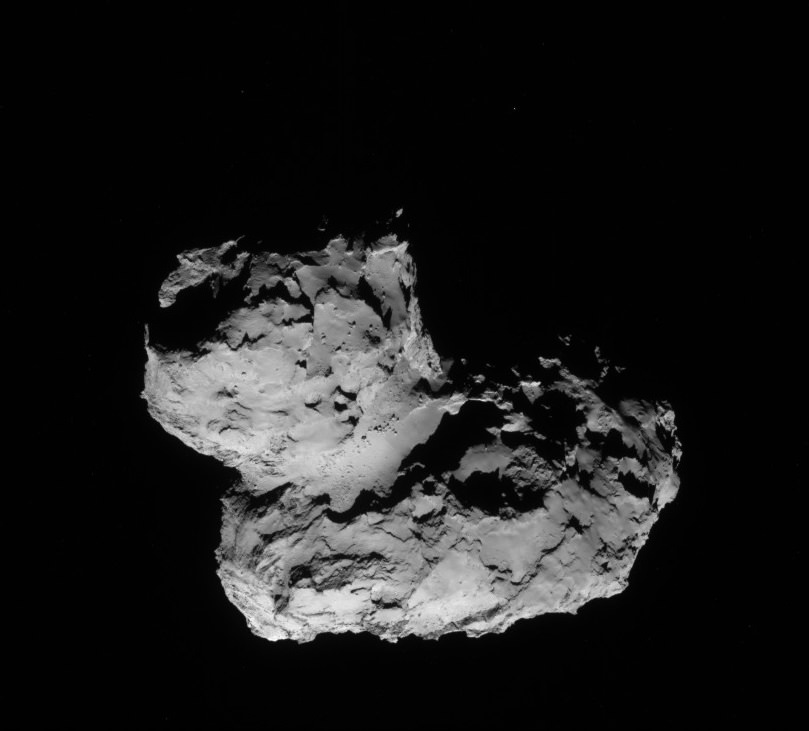Mark your calendars, astronomy geeks: exactly one year from today, the comet the Rosetta spacecraft is chasing will make its closest approach to the Sun. As Comet 67P/Churyumov–Gerasimenko draws closer to the star, the radiation pressure will cause gas, ice and dust to stream off the comet in ever greater quantities, scientists expect.
But that process is already starting. Preliminary measurements by a dust detector aboard the Rosetta spacecraft show that dust is at least as frequent — or perhaps even more abundant — than what models have predicted. Meanwhile, as reported on Universe Today earlier this week, Rosetta’s COSIMA instrument is also doing dust measurements.
Rosetta’s Grain Impact Analyser and Dust Accumulator (GIADA) has already detected four dust grains on its impact sensor. The detections took place between Aug. 1 and Aug. 5 at various distances as Rosetta approached the comet, starting from as far as 814 kilometers (506 miles) to as close as 179 kilometers (111 miles). Rosetta arrived at the comet on Aug. 6.
The first impact was just a tad higher than the detection limit for GIADA, scientists said. They also estimated how big the grains are based on how quickly they crash into the impact detector — anywhere from tens of microns (the width of a human hair) to a few hundreds of microns across.
While the results are scientifically interesting, the European Space Agency pointed out that they will also have practical use.

A lander called Philae is expected to touch down on the comet in November, so dust predictions will help planning for that. And for Rosetta itself, knowing the dust environment can help protect the spacecraft from strikes.
“GIADA will also provide inputs to other instruments on-board Rosetta, and will help improve coma dust models in support of the Philae landing operations,” ESA stated.
“Furthermore, GIADA will play an important role for the health and the safety of Rosetta and its instruments, providing information about the deposition rates of dust on optical components and critical parts of the spacecraft, such as the solar panels.”
ESA added that the grains themselves are likely a mixture of silicates, organics and some other stuff. Ice from the nucleus surrounds the grains, and the ice itself becomes a gas when the Sun warms the comet. Dust surrounds the comet in a coma and as it gets closer to the Sun, it streams out as a tail.
Source: European Space Agency


It would be nice if you ran a piece on the first spacecraft that collected dust samples from the coma of Comet Wild 2 and had it sent to Earth for studies, the Stardust space probe, and also another one on the Deep Impact mission to Comet Tempel 1. These missions provided useful knowledge in planning the Rosetta mission.